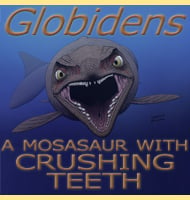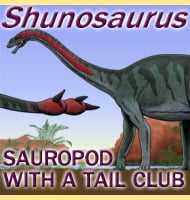Globidens
In Depth Although Globidens was not the only mosasaur to adapt to a diet of almost exclusively hard shelled animals, it does display perhaps the most specialised teeth. Rather than the sharp conical teeth seen in other mosasaurs such as Tylosaurus and Taniwhasaurus, Globidens had rounded teeth that had a ‘globe shaped’ upper portion of … Read more

